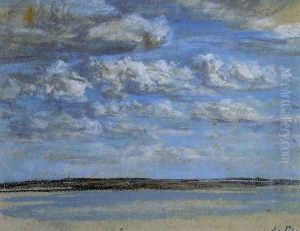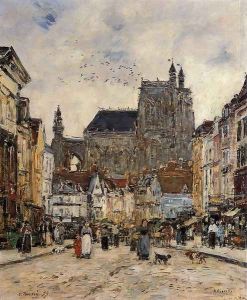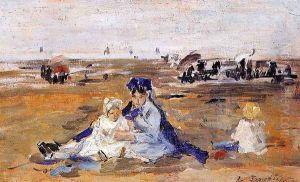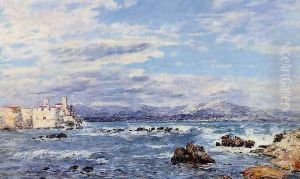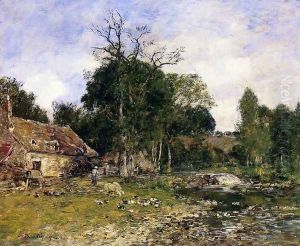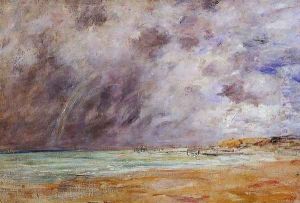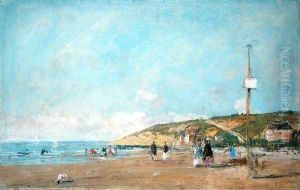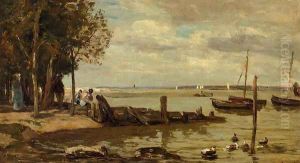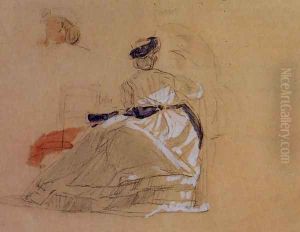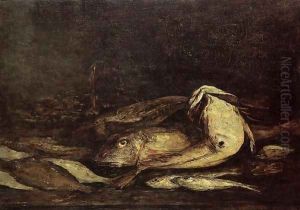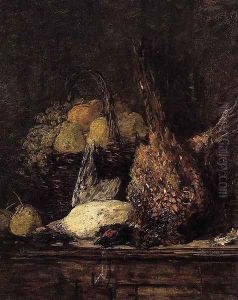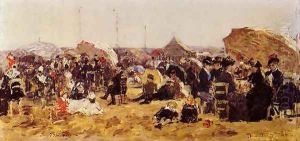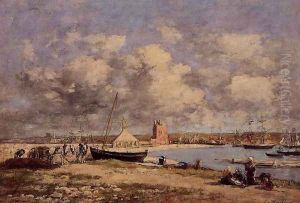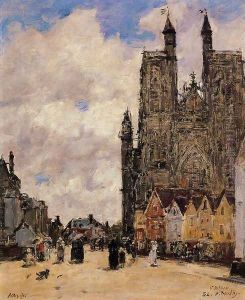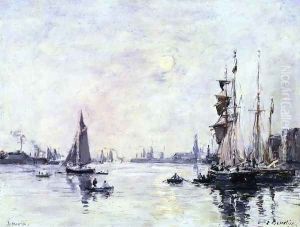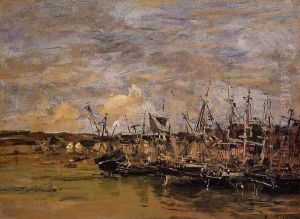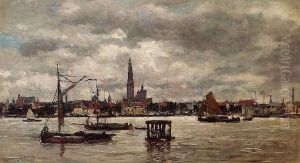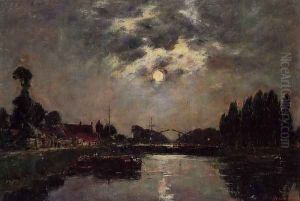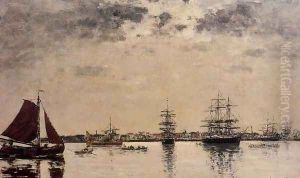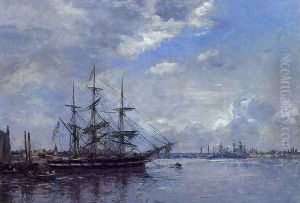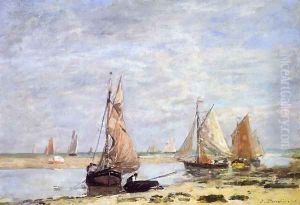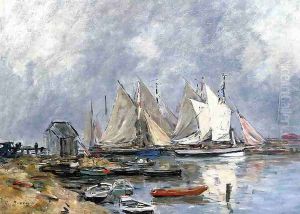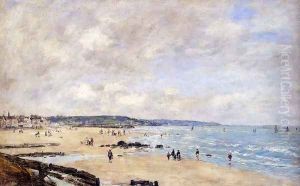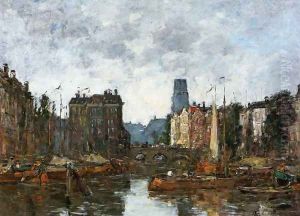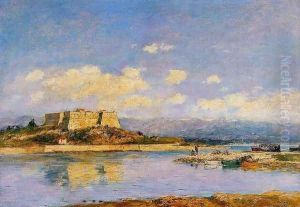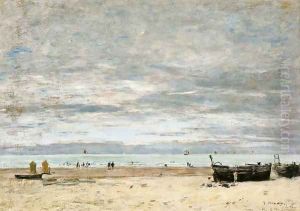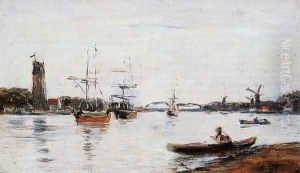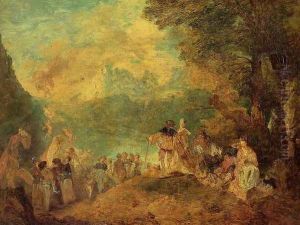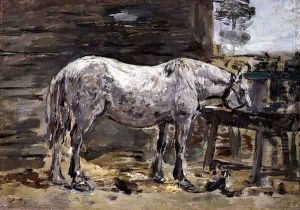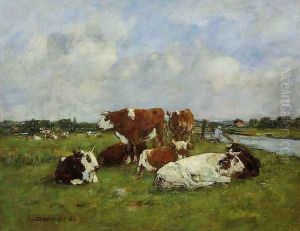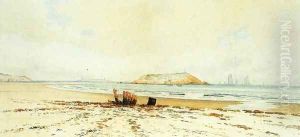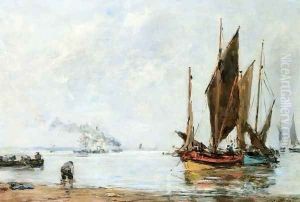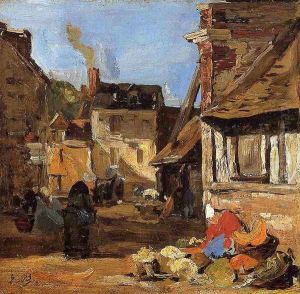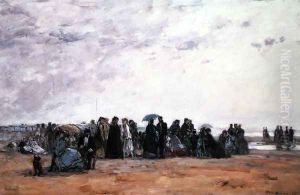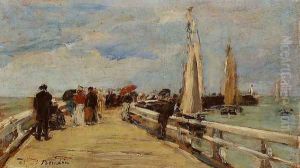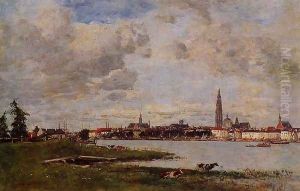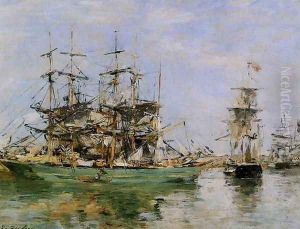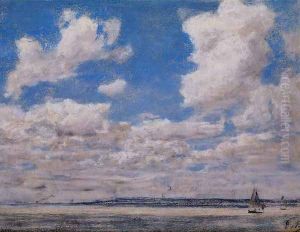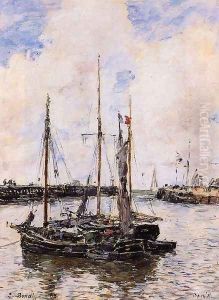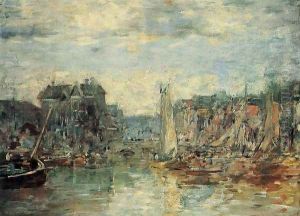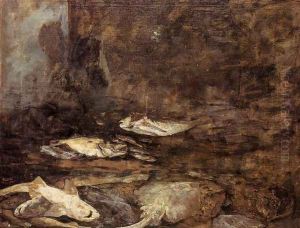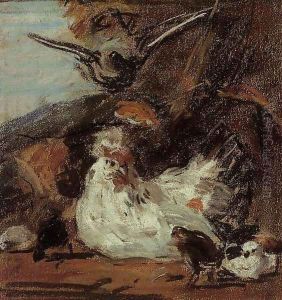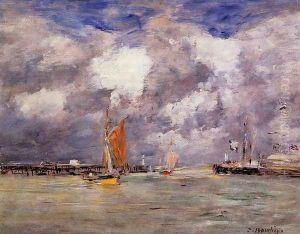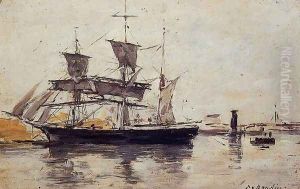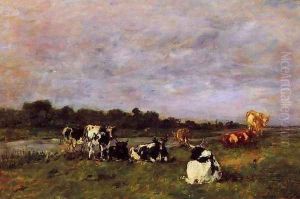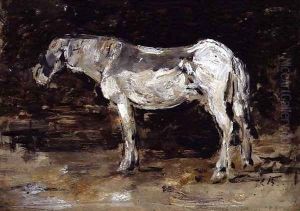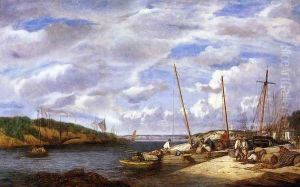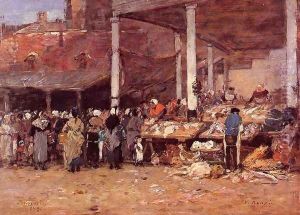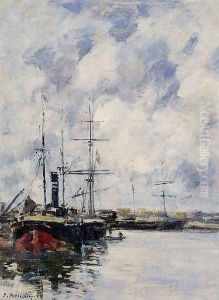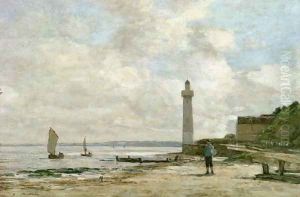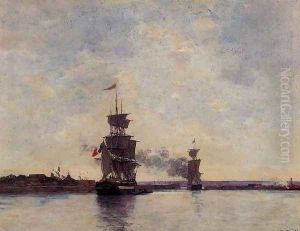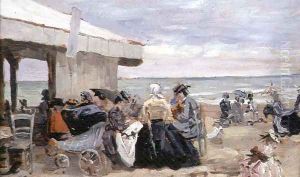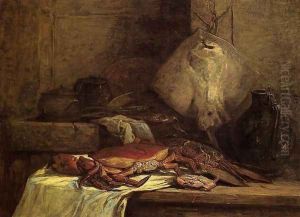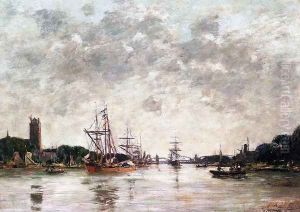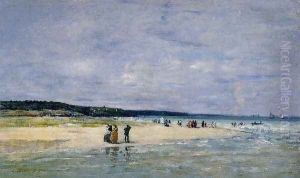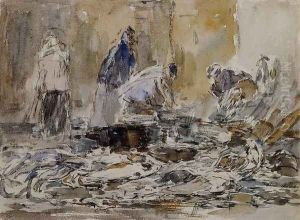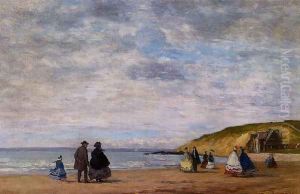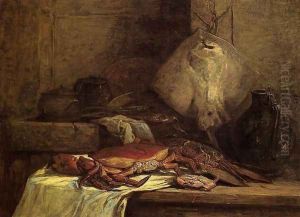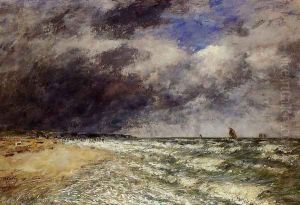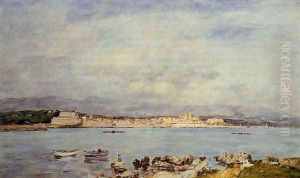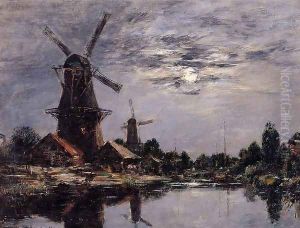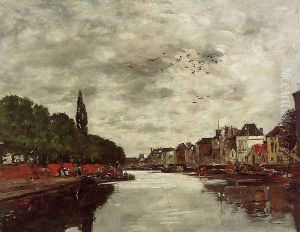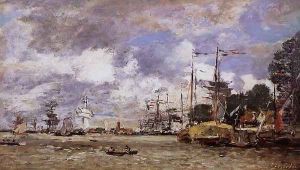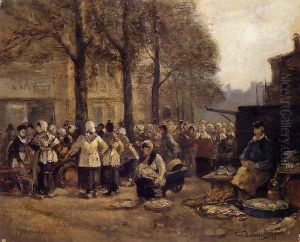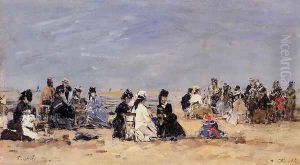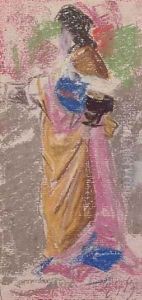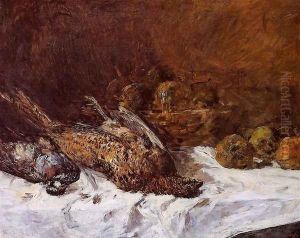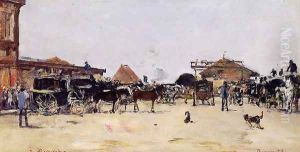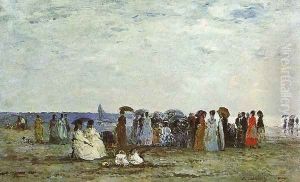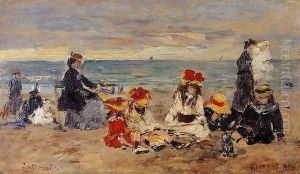Eugene Boudin Paintings
Eugène Boudin was a French landscape painter who was one of the first French artists to paint outdoors, a practice that would become central to the Impressionist movement. Born on July 12, 1824, in Honfleur, Normandy, Boudin's early work reflected the influence of the Barbizon school, which emphasized naturalism and the painting of nature.
Boudin's family moved to Le Havre in 1835, where his father worked as a harbor pilot. Initially working in a stationery and framing shop, Boudin started painting at the age of 22, after meeting various artists who came to the shop to buy supplies. His early paintings were traditional seascapes, but he soon began to capture the changing skies and the effects of light on the sea, which would become a hallmark of his work.
In the 1850s, Boudin was granted a scholarship by the city of Le Havre to study art in Paris. There, he was influenced by the painters of the Dutch Golden Age and the French marine painter Claude Joseph Vernet. Boudin began exhibiting his work at the Paris Salon in 1859 and continued to do so regularly.
Despite his growing reputation, Boudin struggled financially for much of his life. However, he gained the support of several important figures, including the writer Charles Baudelaire, who admired his work. Boudin also played a pivotal role in encouraging the young Claude Monet, whom he met in 1858, to adopt outdoor painting and to pursue a career in art.
Boudin was not an immediate success, and his work received mixed reviews. However, his dedication to capturing the mood and atmosphere of the coast of Normandy and Brittany through his en plein air technique eventually gained him recognition. He became known for his marine landscapes and his depiction of bourgeois life in seaside resorts.
By the 1870s, Boudin's financial situation had improved, and his work began to be more widely appreciated. He exhibited with the Impressionists in 1874 but never fully identified with the movement, despite sharing many of their techniques and interests.
In his later years, Boudin travelled extensively, painting not only in France but also in Belgium, the Netherlands, and Venice. He continued to paint almost up to the time of his death, leaving behind a vast body of work that includes over 4,000 paintings. Eugène Boudin died on August 8, 1898, in Deauville, within the Normandy region where he had spent much of his life. His legacy is that of a pioneering figure in the development of the Impressionist movement and as an artist who captured the transient effects of light with subtlety and insight.
